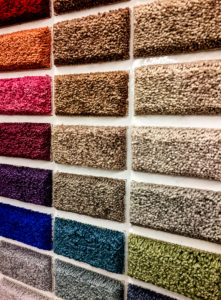Report calls for eliminating toxic materials from carpets

Photo © BigStockPhoto
Earlier this month, the Healthy Building Network’s (HBN’s) report, “Eliminating Toxics in Carpets: Lessons for the Future of Recycling,” advocates for removal of more than 40 highly toxic chemicals in manufacturing processes for carpeting. The report says these chemicals are known to cause respiratory disease, heart attacks, strokes, and asthma, as well as immune and developmental health problems in children. It also outlines strategies to protect public health and the environment by eliminating hazardous chemicals, increasing recycling rates, and improving product transparency.
Carpets hold a 60 percent share of the country’s flooring market, with 1 billion m2 (11 billion sf) sold annually. According to the study, only five percent of this is recycled, with the rest headed to landfills or incinerators, releasing pollutants into the air, soil, and water. Carpet production is slated to grow 4.5 percent annually to 1.35 billion m2 (14.6 billion sf) by 2019, so production, use, and disposal will continue to have major repercussions.
The report’s release complements a landmark California bill (AB 1158, Carpet Recycling) expected to force major changes on how carpet is made and disposed of, mandating a doubling of the state’s current carpet recycling rate by 2020 and ending the consumer subsidization of carpet incineration.
“Protecting public health while achieving desired recycling rates, particularly those just mandated in California, will require a combination of strategies, including product transparency, recycled feedstock screening, and less toxic carpet design,” said Jim Vallette, the report’s lead author and research director of Healthy Building Network. “Fully realized, this is a formula that works—it boosts recycling rates by creating clean material streams, protects human health and the environment, and saves energy and other resources.”
The report also found some manufacturers fail to fully disclose carpet ingredients, and that green certifications do not address some of the substances of concern. The report says a majority of carpets are in some way certified ‘green’ or otherwise publicly rewarded, even though they may contain toxic substances. The authors called on regulators to mandate the full disclosure of carpet ingredients as well as their risks to human health.
There are alternatives to every toxic substance identified in the report, determined the authors. This finding indicates a slow and steady, albeit piecemeal, transformation of the carpet industry is underway. One of the largest carpet companies in the United States informed HBN it “no longer uses fly ash as a raw material in any of its carpet products.” Three major producers sell carpet fibers without fluorinated stain repellants. Others have implemented recycled content screening practices or launched new carpet lines that are seemingly well designed for circular recyclability.
The report concludes with a call for the fundamental transformation of the carpet industry. Recommendations include:
- banning the most toxic substances identified in the report and replacing them with other readily available, less-toxic chemicals;
- incentivizing the design of fully recyclable carpets and removing substances that impede that process;
- ensuring toxic substances in carpet waste are identified and removed before they are recycled into new consumer products including carpet;
- increasing and enforcing protections for workers in the recycling industry; and
- requiring manufacturers and retailers to fully disclose all material contents in new carpet.
This is the seventh report in HBN’s Optimizing Recycling series of technical reports. These examine the condition of post-consumer recycled feedstocks and provide pathways to increase their use in building products without harming human health and the environment.


